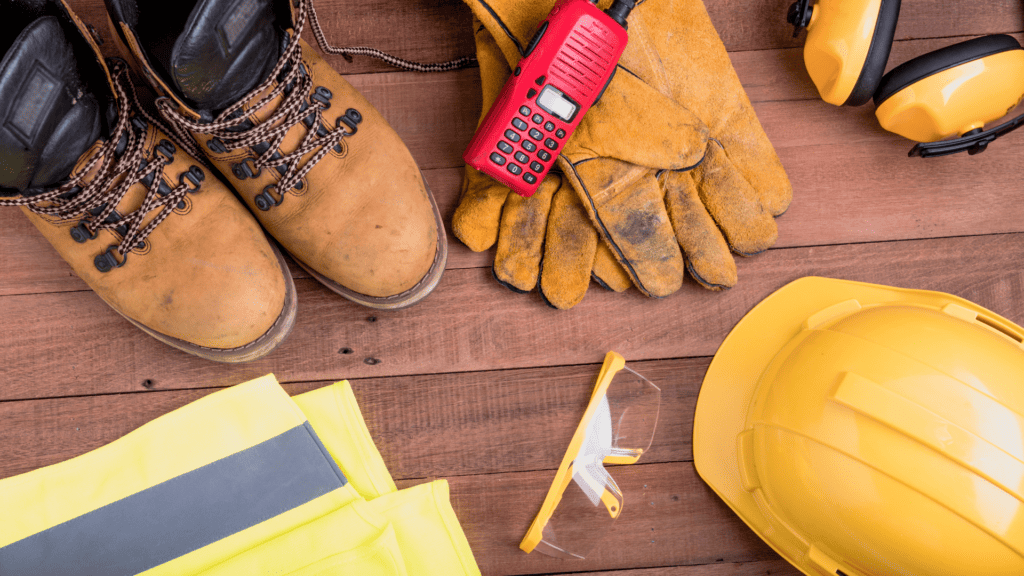The construction industry stands as a cornerstone of economic development, infrastructural progress and creates numerous job opportunities. However, this thriving sector also faces risks, with workers exposed to various hazards daily.
Among these dangers, concussions are a significant and often overlooked issue within the construction sector. Statistics reveal a significant prevalence of concussions due to falls, falling objects, and other construction-related incidents. The impact of concussions on worker health can be severe, leading to short-term cognitive impairments, long-term neurological problems, and an increased risk of accidents.
Understanding Concussions in Construction
Concussions are traumatic brain injuries caused by a sudden blow or jolt to the head, leading to the brain shaking within the skull. In the construction industry, common causes of concussions include falls from heights, being struck by falling objects, and accidents involving heavy machinery. These incidents can happen due to factors such as insufficient safety measures, inadequate training, and human error.
Related Article: Understanding Concussions in Construction
The Impact of Concussions on Construction
Workforce Safety
Concussions present significant risks to construction workers and their overall well-being. Due to the physically demanding nature of construction work, the potential for head injuries is ever-present. A concussion can lead to immediate symptoms such as dizziness, headaches, and confusion, making it challenging for affected workers to safely perform their duties. Moreover, if not properly addressed, repeated concussions or failure to seek medical attention can lead to long-term health issues, impacting not only their ability to work but also their quality of life outside of the job.
Productivity and Efficiency
Beyond the obvious safety concerns, concussions can have a detrimental impact on the overall productivity and efficiency of construction projects. When a worker suffers a concussion, they might need time off for recovery, leading to delays in project timelines and potential disruptions in the workflow. Additionally, even when workers return to work, they may require lighter duties or reduced hours until they fully recover, further slowing down the progress of construction tasks. Consequently, the loss of productive hours and the need for adjustments can accumulate, affecting the project’s overall completion time and costs.

Financial Implications
Concussions not only affect individual workers but also impose financial burdens on construction companies. When an employee sustains a concussion on the job, they may be entitled to workers’ compensation benefits to cover medical expenses and lost wages during their recovery. Frequent concussions or severe cases can lead to higher insurance premiums for the company, impacting its bottom line. Moreover, if a construction company is found negligent in providing a safe work environment or proper safety training, they may face legal consequences and potential lawsuits, resulting in further financial strain and damage to their reputation.
In summary, the impact of concussions in construction goes beyond the immediate health concerns of workers. It affects the safety and well-being of individuals, the smooth functioning of construction projects, and the financial stability of construction companies. Prioritizing concussion prevention and safety measures is crucial for ensuring a safe and productive work environment in the construction industry.
Preventing concussions
Training and Education
Comprehensive safety training is essential in construction to ensure workers understand the risks associated with concussions. By educating employees about proper safety practices, they can identify potential hazards and take preventive measures to reduce the likelihood of head injuries.
Personal Protective Equipment (PPE)
Appropriate PPE, including hard hats, plays a crucial role in safeguarding construction workers’ heads from falling objects and potential impacts. By consistently wearing and maintaining PPE, employees create an additional layer of protection against concussions on the job site.

Safety Protocols and Regulations
Strict adherence to safety protocols and regulatory guidelines is paramount in construction sites to prevent concussions. By establishing clear safety procedures and consistently enforcing them, construction companies foster a culture of safety, minimizing the occurrence of head injuries.
Site Inspection and Hazard Identification
Regular site inspections and hazard assessments are vital in identifying potential concussion risks in construction. By proactively identifying hazards and promptly addressing them, companies can create a safer work environment, reducing the chances of workers experiencing concussions due to preventable accidents.
Collaboration with Healthcare Professionals for Concussion Prevention
By collaborating with medical experts, construction companies can gain valuable insights into best practices for preventing, identifying, and managing concussions in the workplace. This partnership can lead to the development of tailored concussion protocols that suit the unique demands of the construction industry and specific companies.
Early detection and prompt medical intervention play a large role in decreasing the potential long-term consequences of concussions. Healthcare professionals can play a pivotal role in recognizing concussion symptoms, providing appropriate treatment, and monitoring workers’ progress throughout their recovery.
Healthcare professionals are instrumental in overseeing the safe and effective return-to-work process for individuals recovering from concussions. By collaborating closely with employers and workers, healthcare experts can ensure that the return-to-work plan is tailored to each employee’s needs, promoting a smooth transition back to their job duties while prioritizing their health and well-being.
Conclusion
Concussions pose significant risks to construction workers’ safety, productivity, and overall well-being. As highlighted in this article, implementing preventive measures is essential to safeguarding the workforce and reducing the impact of concussions on individuals and the construction industry as a whole.
Preventing concussions in construction requires a collective effort. Employers must prioritize safety protocols, provide adequate training, and ensure the use of appropriate PPE. Workers should actively participate in safety initiatives and communicate potential hazards. Additionally, stakeholders, including industry associations and regulators, must collaborate to set and enforce safety standards.
Every construction company and worker has a vital role to play in preventing concussions. By incorporating the strategies outlined in this article, we can collectively create a culture of safety and well-being within the construction industry. Together, we can work towards a future where construction sites are not only productive but also safe spaces that prioritize the health of those who build our world.
Contact WorkSafe to find out how we can help your company today!
Working to keep you safe, healthy, and productive,

